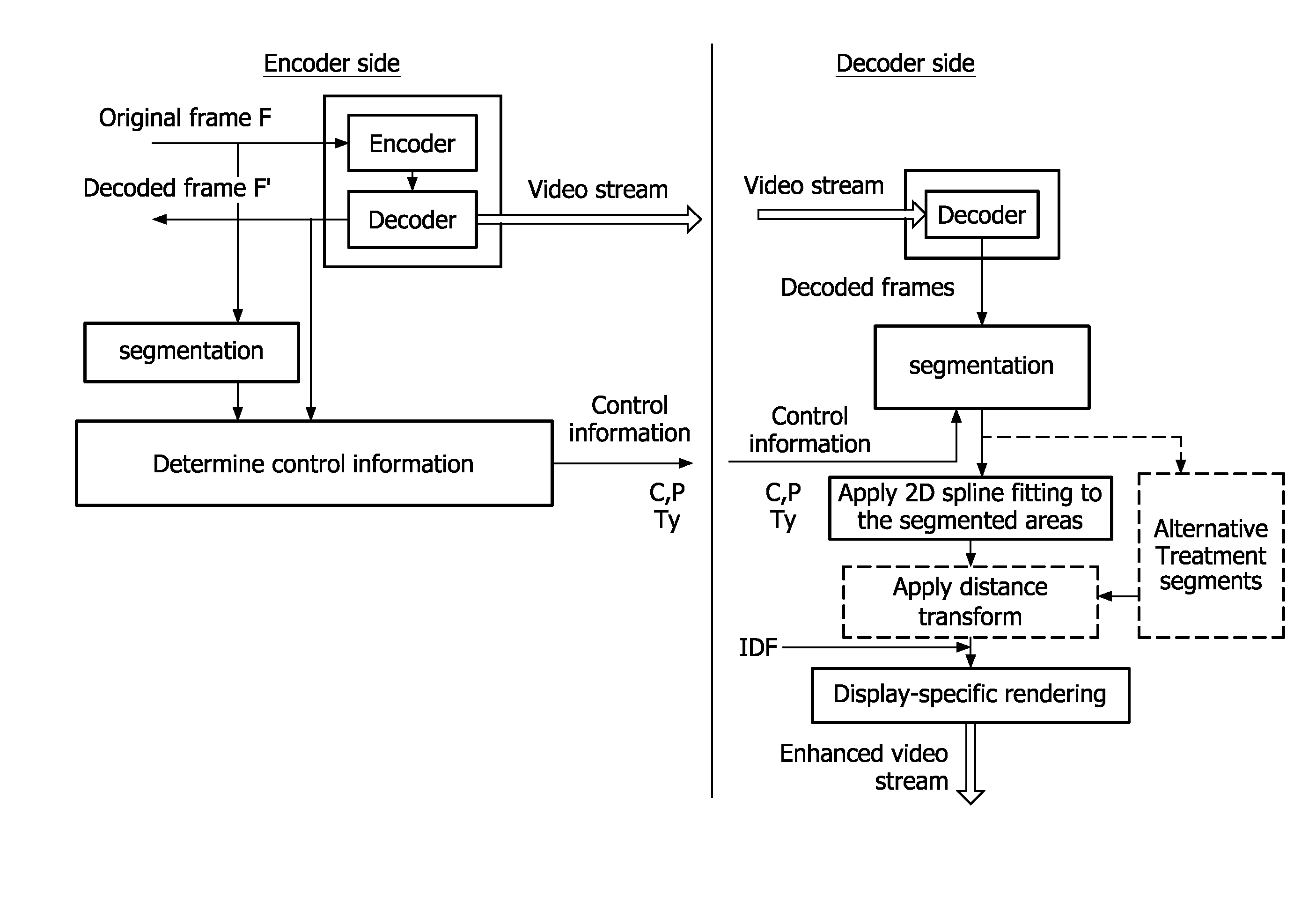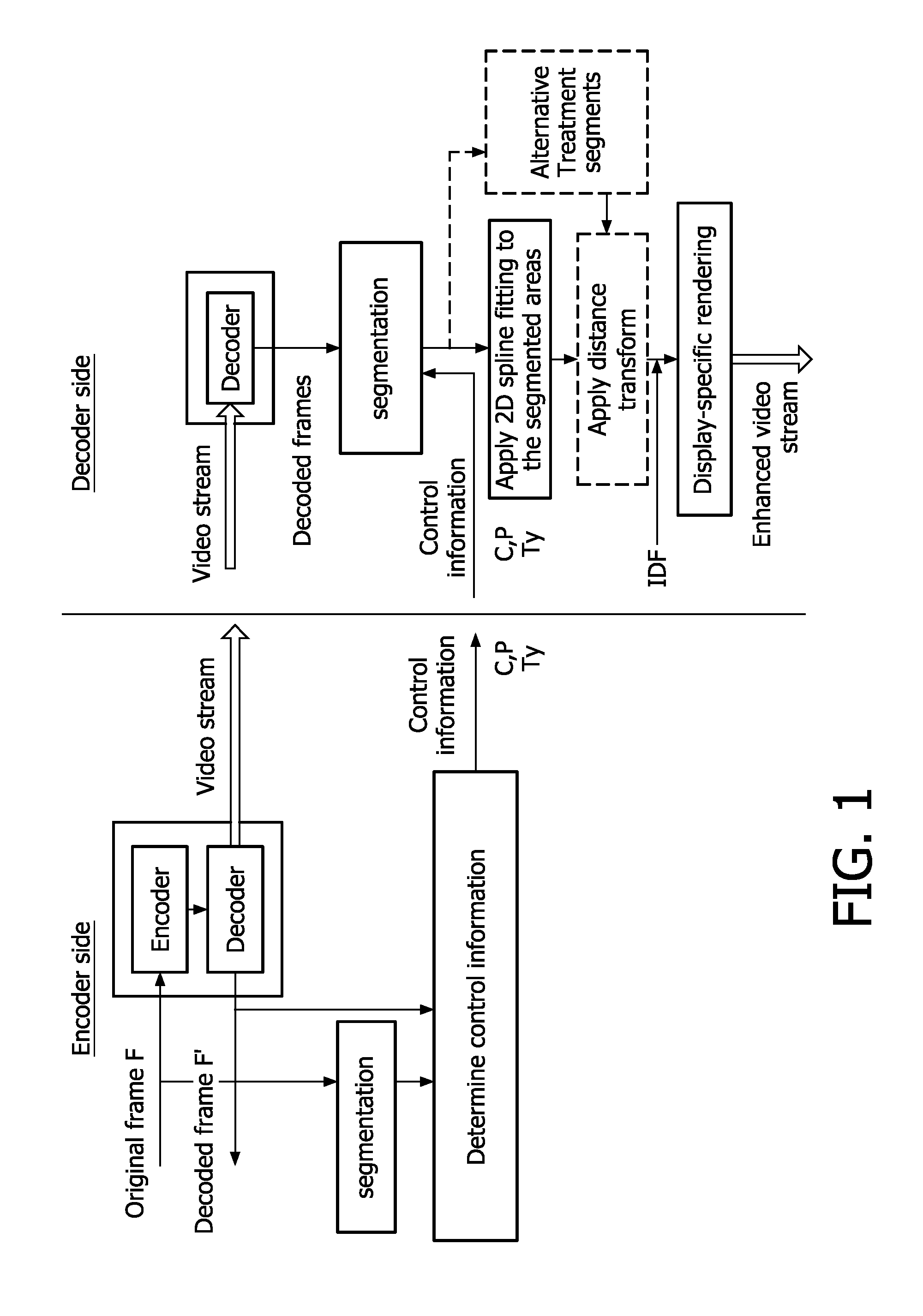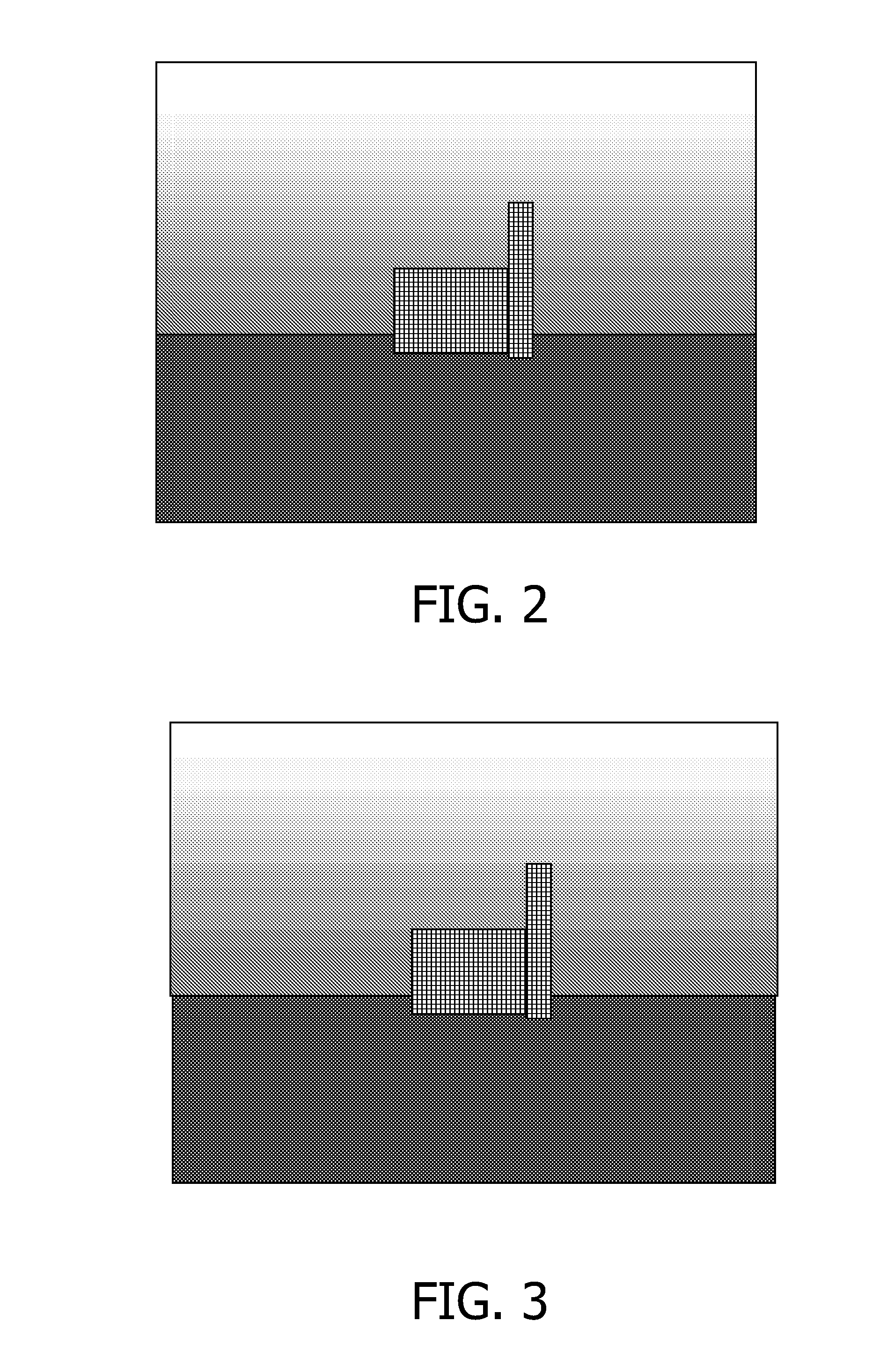Method and system for encoding an image signal, encoded image signal, method and system for decoding an image signal
a technology of encoded image and image signal, applied in the field of method and system for encoded image signal, method and system for decoding image signal, can solve the problems of more visible and annoying, still quite visible artifacts, and experiments with state-of-the-art codec ffmpeg that are not satisfactory, so as to reduce the effect and facilitate the optimization of the derived imag
- Summary
- Abstract
- Description
- Claims
- Application Information
AI Technical Summary
Benefits of technology
Problems solved by technology
Method used
Image
Examples
Embodiment Construction
[0036]FIG. 1 shows a processing flow of an embodiment of our invention used as a post-processing method. This is illustrated in the following:
Encoder Side:
[0037]1. Encode frame F and obtain its corresponding decoded frame F'.
2. Detection of gradual-transition areas in frame F. Frame F is then the first image frame, frame F′ the derived image frame.
[0038]For frame F, first mark all pixels as unprocessed. Scan frame F in the order of left-to-right and top-to-bottom. If pixel at location (xs, ys) is unprocessed, select it as a seed, and apply a floodfill algorithm. The algorithm starts from the selected seed and grows the area as long as the luminance difference between adjacent pixels does not exceed a predefined threshold T. This threshold can be set as a small number (e.g. 3). This is because gradual-transition areas in original frame have the characteristics that neighboring pixels in these areas have very similar luminance values (although the whole area can have a wide distributi...
PUM
 Login to View More
Login to View More Abstract
Description
Claims
Application Information
 Login to View More
Login to View More - R&D
- Intellectual Property
- Life Sciences
- Materials
- Tech Scout
- Unparalleled Data Quality
- Higher Quality Content
- 60% Fewer Hallucinations
Browse by: Latest US Patents, China's latest patents, Technical Efficacy Thesaurus, Application Domain, Technology Topic, Popular Technical Reports.
© 2025 PatSnap. All rights reserved.Legal|Privacy policy|Modern Slavery Act Transparency Statement|Sitemap|About US| Contact US: help@patsnap.com



